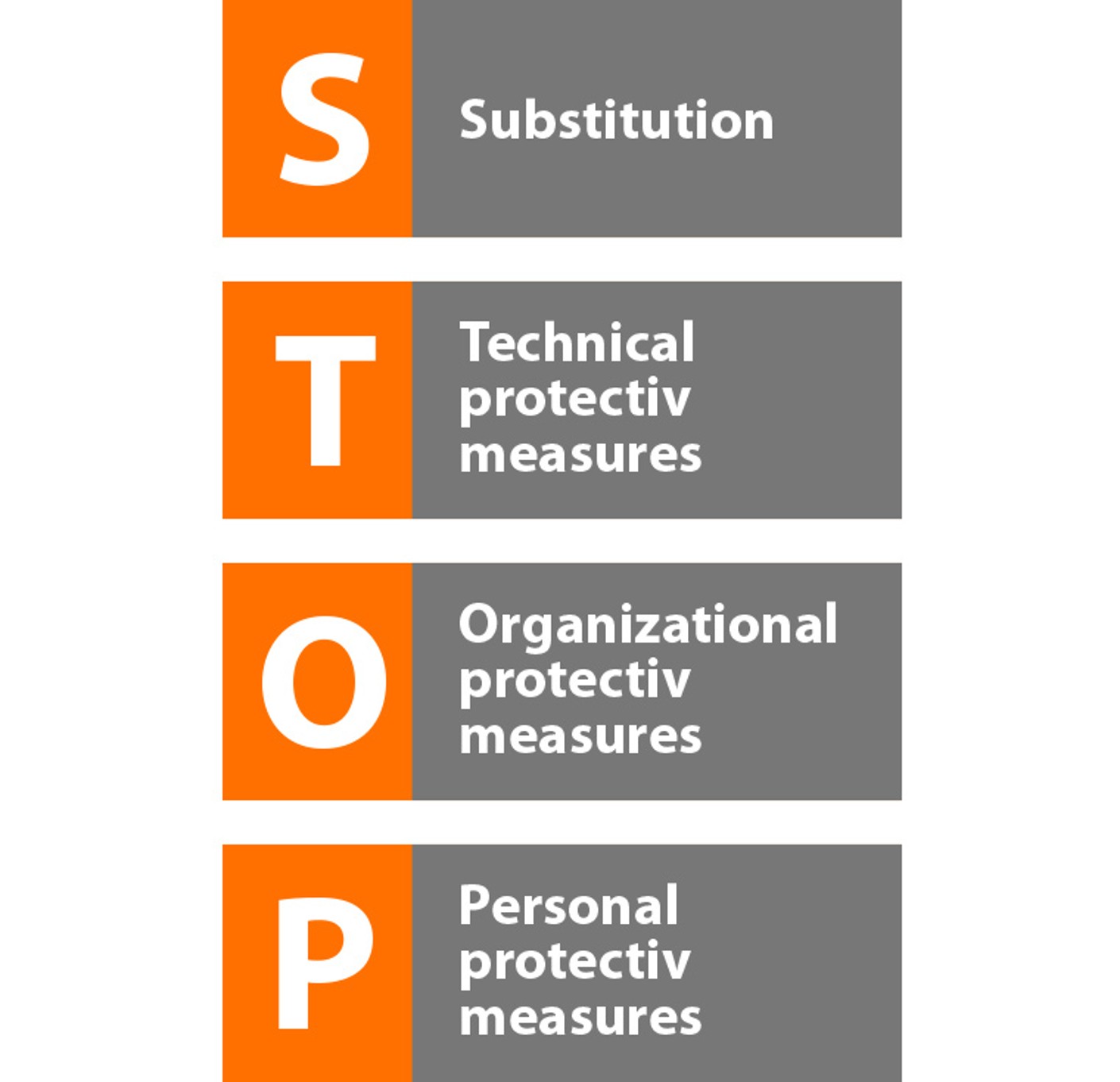Keep your eyes (and ears) open! Noise protection in the modern work environment

Noise levels in the workshop and the risks involved
We hope our tips on noise protection won’t fall on deaf ears with you! From your experience working with metal, you will know the wall of noise generated during cutting and grinding all too well. The decibel levels that reach the ears of those working in such environments are often high enough to damage their hearing. This could severely impair your employees’ health – potentially even permanently. In order to prevent this, it is your job as the craftman in charge of your workshop to carry out a risk assessment for your grinding workstations, in order to evaluate the impact of the noise generated there. If the noise levels recorded in your workshop are higher than the limits specified in the German Occupational Safety Ordinance for Noise and Vibrations (LärmVibrationsArbSchV), work must cease immediately. Once you’ve done this, you need to find the trigger, eliminate the cause and implement appropriate safety measures. On these pages, we will outline the most important noise protection regulations and explain why it is essential to conduct a risk assessment. We will also teach you more about the STOP principle and why it’s worth adopting it at your workshop.
The German Occupational Safety Act: Listening carefully minimises risks

The German Occupational Safety Act (Arbeitsschutzgesetz) is binding for all employers based in Germany. Paragraph 5 of the Act outlines occupational safety measures for improving the safety and health of employees at work, and also includes noise factors. Section 8 of the German Occupational Safety Ordinance for Noise and Vibrations (Lärm- und Vibrations-Arbeitsschutzverordnung/LärmVibrationsArbSchV) provides a further important regulatory framework for noise protection during all activities in the field of cutting and grinding. DGUV Information Bulletin 209-023, which is issued by the German Social Accident Insurance organisation, also contains important information on noise protection. The noise protection info sheet LSI 01-200 deals with noise reduction in the work place.
Less noise reduction in a few simple steps
As the craftman in charge of your workshop, it’s never a bad idea for you to assume that the level of noise generated during grinding and abrasive cutting using hand-held and angle grinders is higher than that permitted by law. As a rule of thumb, occupational safety experts say that electric angle grinders generate noise levels in the 85 to 95 dB(A) range. For you and your colleagues, this means: Never work without hearing protection! If you want to be on the safe side in legal terms, it’s always best to start by taking a look at the technical information provided by the equipment manufacturer. While it is impossible to determine with absolute certainty whether you are adhering to the trigger and exposure thresholds, you can still use these figures as a rough reference value for your workshop. As the craftman in charge of your workshop, your employer may also entrust you with the task of assessing the working conditions in accordance with Section 5 of the German Occupational Safety Act (Arbeitsschutzgesetz). This analysis will help you to determine whether your colleagues are or could be exposed to noise during their day-to-day work in the workshop – and if so, to what extent. Since it is best to assume that this is the case for grinding work, as mentioned at the start of this section, you will need to use the analysis to assess all the resulting hazards to the health and safety of your employees. Even though it is usually impossible to determine with certainty whether the trigger and exposure thresholds are being observed in a metalworking shop, it is your job as the craftman in charge to conduct measurements to determine the extent of the exposure.

The risk assessment in case of staff exposure to noise covers the following factors:
- Type, extent and duration of the exposure to noise
- The trigger and exposure values
- Lower trigger values:
Daily noise exposure level LEX,8 h = 80 dB (A)
Peak sound pressure level LpC,peak = 135 dB (C) - Upper trigger values/maximum permissible exposure values:
Daily noise exposure level LEX,8 h = 85 dB (A)
Peak sound pressure level LpC,peak = 137 dB (C)
- Lower trigger values:
- The availability of alternative equipment and tools that would lead to a lower exposure level for the staff (substitution check).
- Findings from preventive occupational healthcare and generally accessible, published information relating to this.
- The effects of professional exposure extrapolated across an eight-hour shift
- The availability and effectiveness of hearing protection equipment
- The impact on the health and safety of staff belonging to high-risk groups.
- The manufacturer’s information on noise emissions.
Once you have done this, assess the risks in your workshop and subsequently combine these with the risk assessment for vibrations. For more information on this, please refer to the “Hand/arm vibration” information page.
Be aware of potential reciprocal effects between the different types of risk. When considering your occupational safety, you should also bear in mind that your employees are performing tasks that require a high degree of concentration and attention. Check in regularly with each of your employees to find out how much the noise affects their concentration levels and could thus impair their safety.
Document all the findings of your risk assessment and repeat it whenever there are any changes to the working conditions at your workshop. By doing so, you will be playing an important role in ensuring occupational safety and safeguarding the health and well-being of your employees.
These are the most common risks in workshops:
- Work processes with high noise levels, such as abrasive cutting
- Equipment with high noise levels, such as angle grinders
- Noise exposure from adjacent workstations, such as drill presses and milling equipment
- Increases in noise levels due to reflection
- Ambient noise at industrial construction sites where multiple activities are carried out in parallel
STOP – The name says it all

The “STOP principle” stands for the order of priority that you and your company are also required to follow when it comes to defining and implementing safety measures.
STOP stands for:
S - Substitution
T - Technical safety measures
O - Organisational safety measures
P - Personal safety measures
As the craftman in charge of the workshop, this means you need to implement each measure as follows:
- Design your work processes in such a way that there are no risks involved. Check that the equipment you are using is fully functional and is not a source of potential hazards (i.e. make sure all your discs are intact).
- Eliminate any risks, or take measures to reduce them or install protective equipment (e.g. covers on angle grinders, sound protection).
- Take a look at the strains your colleagues are subjected to during cutting and grinding work. Can you make their work processes shorter or more efficient? Can the process be adjusted to reduce their exposure to these strains? Could you use different technology to reduce the strain?
- Check your employees’ personal protective equipment, making sure that all the relevant items are both in place and fully functional. Are there any cracks in their goggles? Are their mouth and nose masks still fully functional? Are their gloves intact? Does their hearing protection fit, and does it provide sufficient protection?
By applying the STOP principles, you can reduce risks at your work place and play an important role in improving the health, safety and well-being of your employees.
